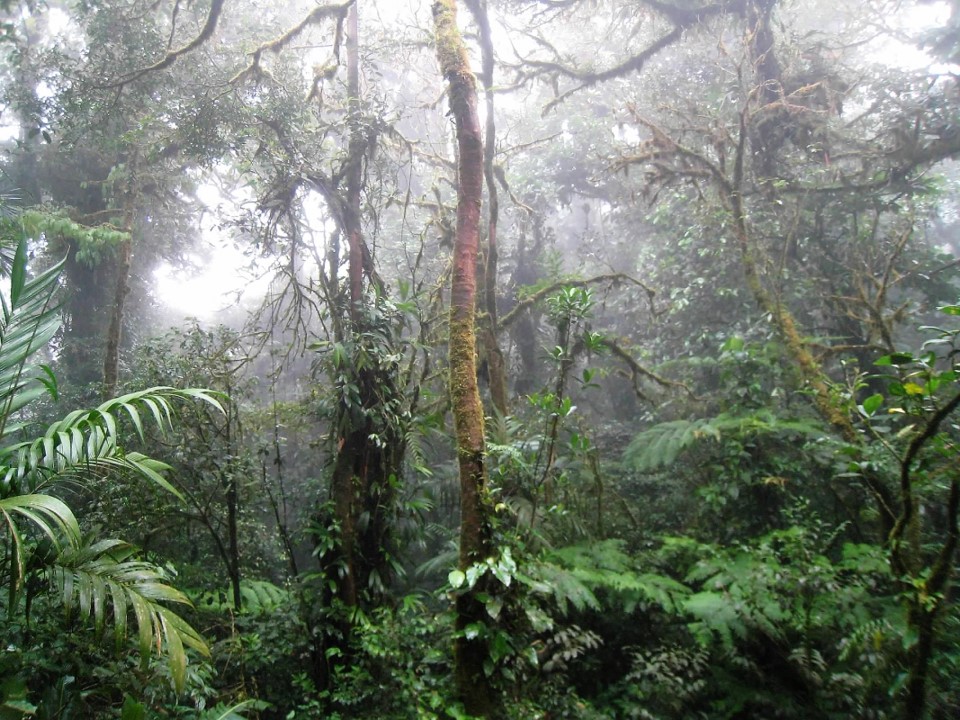5.4: Terrestrial Biomes
( \newcommand{\kernel}{\mathrm{null}\,}\)


A biome is a large geographical area characterized by climate and vegetation. Biomes may be terrestrial or aquatic, but this chapter will focus only on terrestrial biomes. Terrestrial biomes are characterized by their plant life. The types of plants depend on the amount of precipitation in an area as well as the temperature. Different adaptations evolve based on the abiotic factors. For example, desert environments with less rainfall will have a different type of vegetation and plant life will be more scarce than tropical rainforests which have plenty of rainfall throughout the year (Figure 5.4.1).
- 5.4.1: Introduction
- Plants are main components of terrestrial ecosystems as they are primary producers. Almost all terrestrial life if based on the types of plants found in the area.
- 5.4.2: Climate and Biomes
- Biomes are large-scale environments that are distinguished by characteristic vegetation and climate. Since a biome is defined by climate, the same biome can occur in geographically distinct areas with similar climates.
- 5.4.3: Tropical Rainforest
- Tropical rainforests are the most diverse terrestrial biome. Temperatures and precipitation are both high, allows plants to flourish. Tropical rainforests are characterized by vertical layering of vegetation and the formation of distinct habitats for animals within each layer.
- 5.4.4: Tropical Deciduous Forest
- Tropical deciduous forests contain two seasons: the dry season (with no to little rain) and the wet season (with heavy rain). Deciduous trees lose their leaves during the dry season and re-grow them during the rainy season. This allows the plants to save energy when liquid water is not as available. This biome contains a constant warm temperature throughout the year.
- 5.4.5: Savannas
- Savannas are characterized rolling grasslands scattered with shrubs and isolated trees. Savannas are also known as tropical grasslands.
- 5.4.6: Desert
- Deserts can be found between 15-30 degrees north and south latitude as well as on the downwind or lee side of mountain ranges, which create a rain shadow. This biome has low species diversity because of its low and unpredictable precipitation. Many annual plants can be found in desert biomes, as can some perennials.
- 5.4.7: Mediterranean (Chaparral)
- The Mediterranean ecosystem occurs only in five relatively small areas around the planet. Mediterranean ecosystems are characterized by mild, rainy winters and warm, dry summers and are moderated by cold ocean currents offshore. The chaparral vegetation is dominated by shrubs and is adapted to periodic fires, with some plants producing seeds that germinate only after a hot fire.
- 5.4.8: Temperate Grasslands (Prairie)
- Temperate grasslands have pronounced annual fluctuations in temperature with hot summers and cold winters. They are areas of open grass with few trees, most of which are found growing along rivers or streams.
- 5.4.9: Temperate Deciduous Forests
- Temperate forests are dominated by deciduous trees. Deciduous trees in this biome begin to lose their leaves in autumn and grew them back in the spring.
- 5.4.10: 22.10 Temperate Rainforest
- Temperate rainforests, sometimes called mixed evergreen forests, are common on the western coast of the United States. The conditions of this biome are similar to temperate deciduous forests but winters are colder and last longer. Both deciduous and evergreen (coniferous) trees are common in this biome.
- 5.4.11: Boreal (Coniferous) Forests
- The boreal forest, also known as coniferous forest has cold, dry winters and short, cool, wet summers. In the winters, little evaporation occurs because of the cold temperatures. Though evergreen, the net primary productivity of boreal forests is relatively low, as is species richness. These are evergreen coniferous trees like pines, spruce, and fir, which retain their needle-shaped leaves year-round.
- 5.4.12: Arctic Tundra
- The Arctic tundra lies north of the subarctic boreal forests and is located throughout the Arctic regions of the Northern Hemisphere. Plants in the Arctic tundra are generally low to the ground and include low shrubs, grasses, lichens, and small flowering plants with small leaves. There is little species diversity, low net primary productivity, and low aboveground biomass. Permafrost makes it impossible for roots to penetrate far into the soil.


